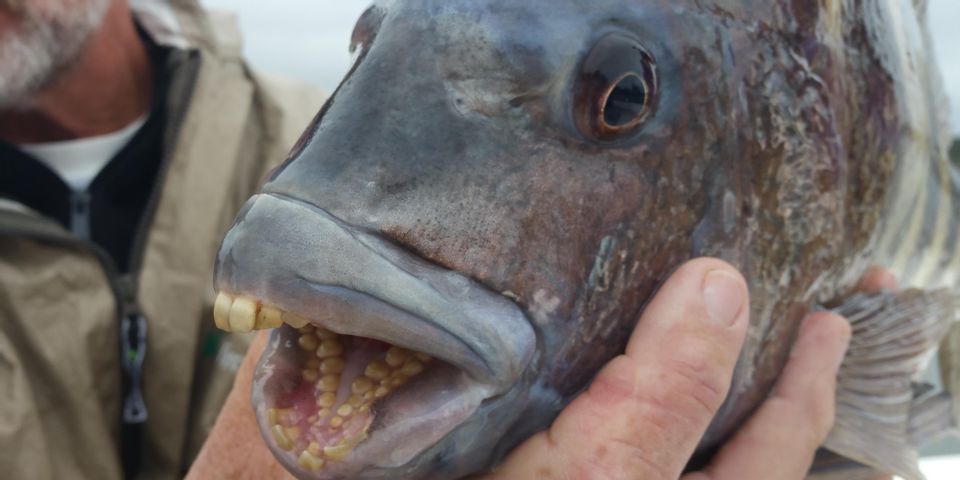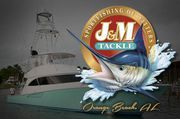
Fishing for Spring Sheepshead in Coastal Alabama
Blake Michaleski
There is a saying in and around Coastal Alabama that when the Azaleas bloom, the sheepshead loom. These often underappreciated fish gather in spawning aggregations along the Alabama Gulf Coast beginning in late winter and are in full force by March. Many locals consider sheepshead to be one of the finest eating inshore fish.
Sheepshead, Archosargus probatocephalus, is a coastal fish with dark vertical bars, sharp dorsal spines and a very unique set of teeth, with the frontal teeth resembling human teeth. These are followed by rows of crushing teeth. These features, along with their affinity for hard structure, should make it no surprise that they primarily feed on crustaceans and mollusks. Barnacles, oysters, clams, shrimp, and various small crabs all make up the sheephead primary diet. Anglers can find sheepshead along rock jetties, docks, seawalls, bridge pilings and other hard structure with good barnacle and oyster growth.
Sheepshead are commonly taken by shorebound and boating anglers in the coastal waters of Alabama. Medium power rods 6’-7’ in both spinning and baitcasting are typical. Spooled up with 8-12# mono or 30-40# braid, anglers then must decide which bait, and probably more importantly, what bait rig to use. Rigs vary but most work well regardless of the bait chosen. Freeline or simple split shot rig provides the most finesse. Typically anglers will tie several feet of 20 or 30# fluorocarbon leader to their main lines. Fluorocarbon is much less visible in water than nylon monofilament and sheepshead can be notoriously finicky. Fishing in current often involves more weight with many anglers going to the very familiar Carolina rig. The downfall of this rig is its tendency to get snagged while fishing over rocky bottom or jetties. A good alternative is a 3-way swivel rig with a much lighter line connecting the weight. If the weight gets hung up in the rocks, the entire rig is not lost. The three way swivel rig keeps the bait up and above the rocks instead of allowing your bait to seek cover in the structure. Slip floats are another popular rig for when sheepshead are suspended on vertical structure. The slip cork allows the angler to fine tune their presentation to target a particular depth.
Fishing around this hard structure presents the hazard of being cut off by sharp barnacles or oysters. Losing tackle is common. Many anglers choose a cheaper hook when first getting started sheepshead fishing, but anglers who have dialed-in the fight and are losing less fish tend to fish a better quality hook such an Owner Mosquito hook. They are exceptionally strong for their thin wire diameter and very sharp, providing a quick hookup without adding unnecessary weight to your bait, allowing for a more natural presentation.
Successfully landed fish often get a one way ticket to the frying pan or broiler. While sheepshead are delicious, many anglers are discouraged at the perceived effort to clean them. Cleaning sheepshead is only hard when the proper technique is not used. Many try to fillet them like they would a trout or redfish but immediately run into a ribcage that will stop most knives. The trick is to cut the meat away from the body much like one would clean a snapper.
Although sheepshead are fun to fish for, are fairly abundant, and make for excellent table fare, Remember to practice good conservation of the resource and only keep what you need. Save some fish for the future, not the freezer.
Consult outdooralabama.com for up-to-date size and creel limits.
About the Business
Have a question? Ask the experts!
Send your question

